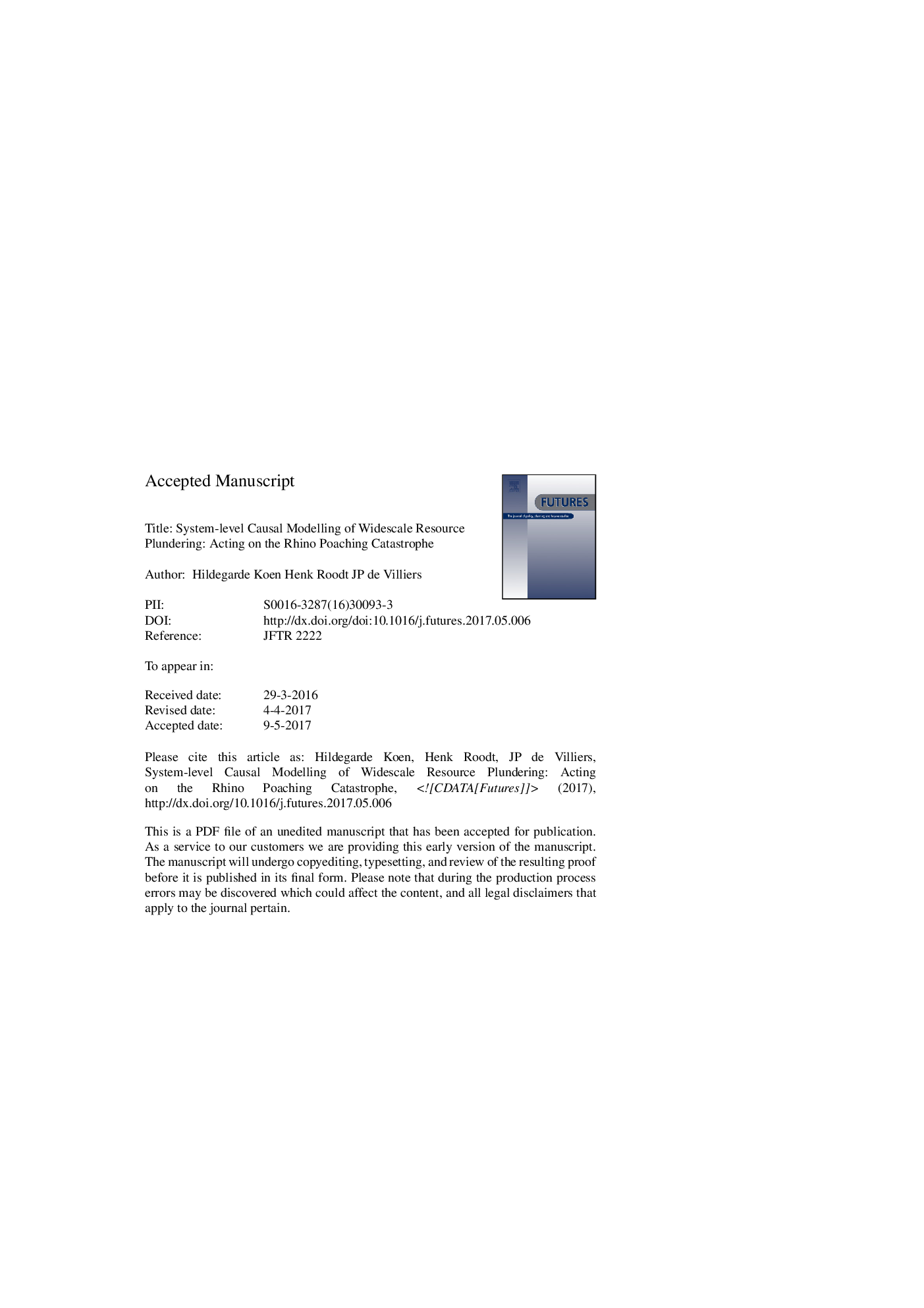| Article ID | Journal | Published Year | Pages | File Type |
|---|---|---|---|---|
| 5109060 | Futures | 2017 | 33 Pages |
Abstract
The initial goal of this study was to develop a predictive model that could serve as a pre-emptive method for curbing rhino poaching. During the development of the predictive model it became evident that only the tip of the iceberg, so to speak, has been uncovered. The rhino poaching problem is even more complex than was initially thought and this paper serves as a reflective piece on how the research methodology for the complex and poorly understood rhino poaching problem was shifted towards developing a common understanding of major drivers and interactions, to allow for pre-emptive action on a variety of fronts. The global drivers dictating the rhino horn supply chain such as human trafficking and other socio-economic factors cannot easily be captured in a model of causal certainties. This is in spite of the fact that the motivation of the individual poachers may reduce to greed or the need to provide for their families. Although the authors initially thought that it would be possible to model these causalities it became clear that the system is highly reflexive and adaptive. The system has feedback and recursive causal internals that self-regulate by changing in response to the environment. As interventions are introduced, the system will try to respond to mitigate the effects or impact of the change which makes predictive causal modelling very challenging. The paper reflects on this understanding derived from the development of a methodology that combines different versions of a causal Bayesian Network model with a systems framework drawn from an integral ecology perspective.
Related Topics
Social Sciences and Humanities
Business, Management and Accounting
Business and International Management
Authors
Hildegarde Koen, Henk Roodt, J.P. de Villiers,
